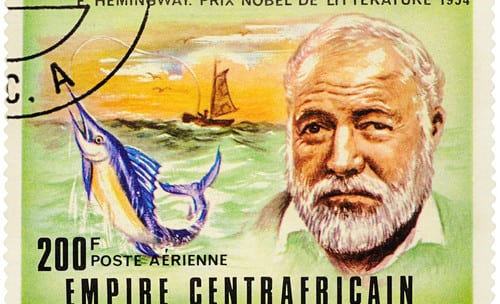
There’s a whiteboard above my desk that I use for jargon. On the board, underneath the word no, which is crossed out, I’ve written the words space, etc., key and snackable as well as several PR clichés that I’ve made clear I never want to see in communications coming from our office.
But day after day, week after week, I find myself looking at draft press releases where a brand is going to “leverage” something from its “DNA” to “strategize” on how to “break through the clutter.” And, of course, it will do this “from a learning perspective.” Worse, these terms are buried in indeterminable, passive constructions that leave the intended meaning of a sentence maddeningly unclear.
This attitude makes me the Red Demon of the office, tearing through materials with a pen. Documents are left half of their original size in the wake. As presentations are reformatted to deal with the additional space that my edits have created, I’m left to wonder why. I work with talented people with college educations from prestigious universities.
Why is the default mode verbose? More important, how can it be fixed?
Thankfully I don’t think poor syntax was embedded into peoples’ genes. Rather, it is a mask, a bad habit picked up in the nascent days of a career where it’s paramount to seem smart.
I know this because I’ve seen some of the very same people who send tortured prose in memos produce clean, clear copy. They do so in iMessages and MMS, through snaps and Slack conversations.
I, and I’ll bet you, sometimes learn more from a series of quick messages after an interview than a page-long email “recapping” it. Usually I know more after 20 seconds of conversation than I do after wading through most three-page press releases.
Distilling information is an important part of the communicator’s job and perhaps one that’s under-appreciated. Saying more with less is how people do things online, mostly because it’s simply better communication.
Until they throw away my computer and replace it with an iPhone, this online/text speak needs to be adapted to work in an office.
I’ve been a big advocate of turning our shop over to Slack for internal discussion. I’ve even proposed a 30-day ban on internal communication. While that idea didn’t even make it out of a group discussion, I still believe PR pros should challenge themselves to email less. Once every interaction no longer requires an email, other mediums can appear.
Senior executives should make it clear that texting, instant messaging and other new-media platforms should be considered for discussion. We need to work in offices where people don’t rush to close a Gchat window because the boss is coming.
Some communications are trickier, no doubt, and may require some length. And there is still too much value placed on producing a crisp document or presentation when the same point can be conveyed by a bitmoji. But we can challenge ourselves to use that direct, active style on formal documents.
Three pieces of advice:
- Send a three-sentence version that summarizes the point of a document. Even better, send 3 phrases. They need not be complete sentences.
- Forget length requirements. Be confident quality, not quantity will sell.
- Make sure every presentation contains at least one unique element. Don’t be afraid to be surprising, clever or even a touch absurd.
It’s that simple.
Online we are all as brief as Ernest Hemingway. Why are we like Marcel Proust in the office?
Jon Schubin is a vice president at Cognito.
